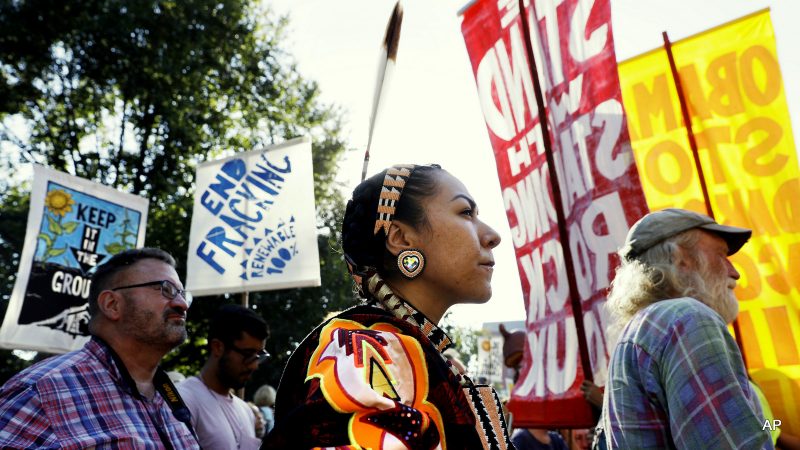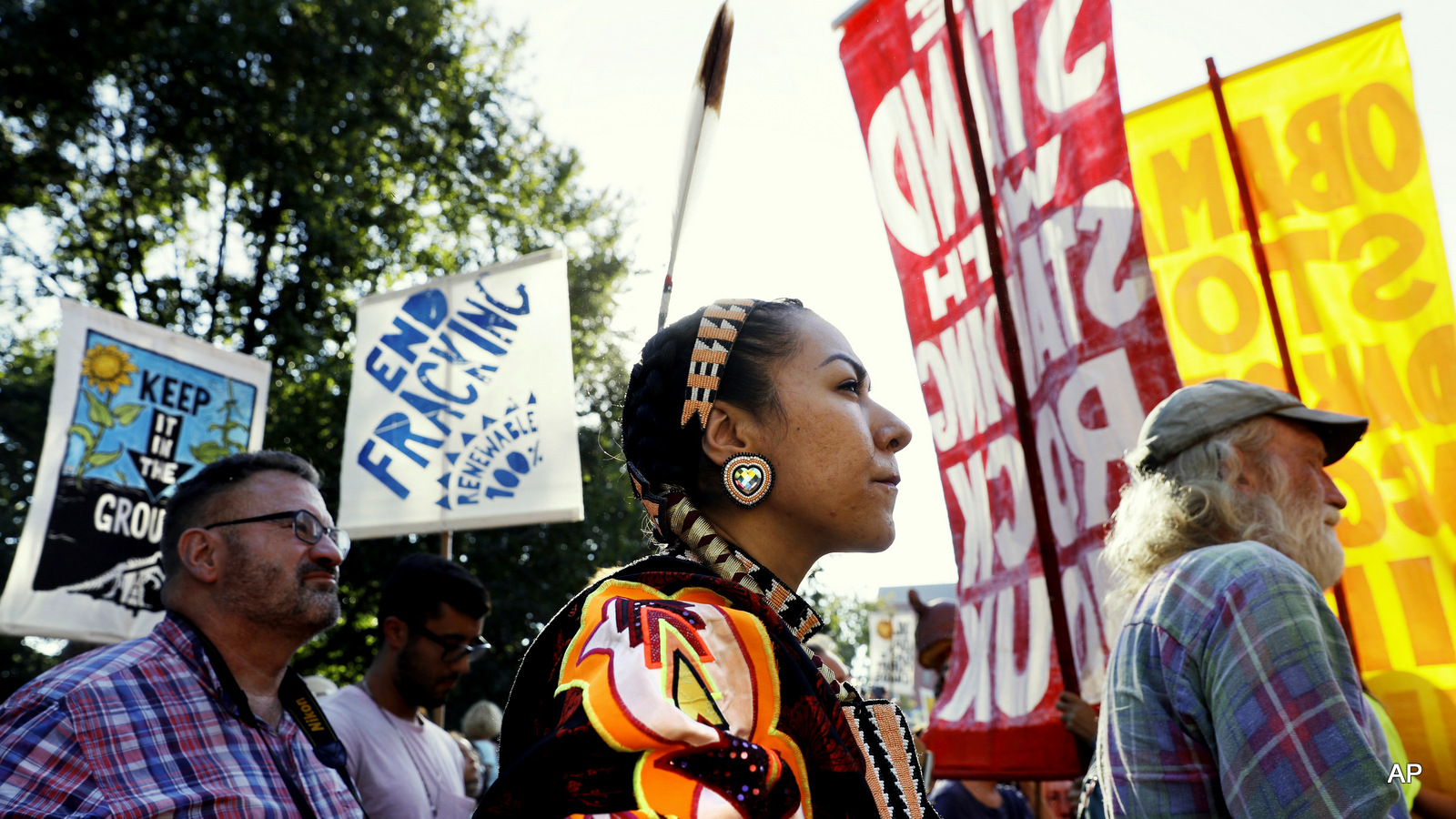
Origins of the Doctrine of Discovery
Analysis — To understand the Christian principle of discovery’s connection to the current laws of the United States, one must examine a papal document issued forty years before Columbus’ historic voyage.
In 1454, the Bull Romanus Pontifex was issued by Pope Nicholas V to King Alfonso V of Portugal, which declared war upon all non-Christians worldwide. He specifically sanctioned and promoted the conquest, colonization, and exploitation of all non-Christians and lands under their control.
All non-Christians were labeled as enemies of the Catholic faith and, as such, less than human. In the Bull of 1454, Pope Nicholas directed King Alfonso to “capture, vanquish, and subdue the Saracens, pagans, and other enemies of Christ,” to “put them into perpetual slavery,” and “to take all their possessions and property.”
By the time Columbus sailed across the Atlantic in 1492 – he was following an already well-established tradition of conquest and “discovery.”
It’s extremely important to note that the heinous acts of brutality and genocide carried out by Columbus and his men against the indigenous people of the Caribbean were fully endorsed and sanctioned by the holy documents of Christendom. These religious texts were used as a justification for the brutal system of colonization imposed upon non-Christian people, whom the church categorized as “brute animals.”
Doctrine of Discovery & U.S. Law
So how did something that was a papal doctrine within the Catholic Church become adopted by the U.S. legal system?
The U.S. Supreme Court, in 1823, adopted the Christian Doctrine of Discovery into U.S. law in the celebrated case, Johnson v. McIntosh. Chief Justice John Marshall, writing for the unanimous court, made note that Christian European nations had taken “ultimate dominion” of America during the Age of Discovery. Upon “discovery” – the Natives had lost “their rights to complete sovereignty, as independent nations,” claiming they only retained a right of “occupancy” in their own lands.
Essentially, all Native nations were subject to the ultimate authority of Christendom and the US could then claim possession of any region of indigenous lands.
Furthermore, according to Marshall, the United States, upon winning its independence in 1776, became a successor nation to the right of “discovery” and acquired the power of “dominion” from Great Britain.
When Marshall first defined the principle of “discovery,” he phrased it in such a way, as to draw attention away from its religious overtones, stating that “discovery gave title to the government, by whose subject, or by whose authority, the discovery was made, against all other European governments.”
Upon closer inspection, though, Marshall specifically cited the English charter issued to the explorer John Cabot, to document England’s “complete recognition” of the Doctrine of Discovery. Marshall, paraphrasing the charter, noted that Cabot was authorized to take possession of lands, “notwithstanding the occupancy of the natives, who were heathens, and, at the same time, admitting the prior title of any Christian people who may have made a previous discovery.”
The Court essentially affirmed that U.S. law was based upon precedent of the “Law of Nations,” and that it is was permissible, as such, to ignore native rights as they were considered “heathens.” All “unoccupied lands” of America, rightfully belonged to any Christian European nation that claimed them.
Of course, it’s extremely important to understand that the term “unoccupied lands” referred to “the lands in America which, when “discovered,” were occupied by Indians’ but ‘unoccupied’ by Christians.”
Ironically, the same year that the Johnson v. McIntosh decision was handed down, founding father James Madison wrote: “Religion is not in the purview of human government. Religion is essentially distinct from civil government, and exempt from its cognizance; a connection between them is injurious to both.”
Most of us have been brought up to believe that the United States Constitution was designed to keep church and state apart. Unfortunately, with the Johnson decision, the Christian Doctrine of Discovery was not only written into U.S. law but also became the cornerstone of U.S. Native American policy over nearly the next two centuries.
From Discovery to Dependent
Operating from a standpoint of legal recognition for “discovery,” in 1831, the Supreme Court stated in Cherokee Nation v. Georgia that the Cherokee Nation (and, by default, all Native nations) was not fully sovereign, but “may, perhaps,” be deemed a “domestic dependent nation.”
This decision allowed the federal government to refuse to recognize legal treaties made with Indian nations, as they were no longer considered sovereign nations, but under U.S. government control.
Native American nations were now considered “domestic dependent nations” subject to the federal government’s absolute legislative authority – known as “plenary power.” This power is a direct retardation of the those enumerated in the Constitution, and was never intended by the Founding Fathers.
The myth of U.S. “plenary power” over Indians — a power that was never intended by the authors of the Constitution — has been used by the United States to:
- Circumvent the terms of solemn treaties that the U.S. entered into with Indian nations, despite the fact that all such treaties are “supreme Law of the Land, anything in the Constitution notwithstanding.”
- Steal the homelands of Indian peoples living east of the Mississippi River, by removing them from their traditional ancestral homelands through the Indian Removal Act of 1835.
- Use a congressional statute, known as the General Allotment Act of 1887, to divest Indian people of some 90 million acres of their lands. This act, explained John Collier (Commissioner of Indian Affairs) was “an indirect method – peacefully under the forms of law – of taking away the land that we were determined to take away but did not want to take it openly by breaking the treaties.”
- Steal the sacred Black Hills from the Great Sioux nation in violation of the 1868 Treaty of Fort Laramie which recognized the Sioux Nation’s exclusive and absolute possession of their lands.
- Pay the Secretary of the Interior $26 million for 24 million acres of Western Shoshone lands, because the Western Shoshone people have steadfastly refused to sell the land and refused to accept the money. Although the Western Shoshone Nation’s sovereignty and territorial boundaries were clearly recognized by the federal government in the 1863 Ruby Valley Treaty, the government now claims that paying itself on behalf of the Western Shoshone has extinguished the Western Shoshone’s title to their lands.
Somehow an ancient Christian religious doctrine, which allowed for the subjugation of “heathen” non-Christians, was granted legitimacy by the U.S. federal government. This, in turn, allowed the federal government to exert almost complete control over Native nations and their lands.
If there were a true separation of church and state, the Doctrine of Discovery would have long ago been declared unconstitutional. It is based on a prejudicial treatment of Native Americans, due to their non-Christian religious beliefs upon the European arrival.
Ending the Injustice
To penalize a group of people due to their religious belief system reeks of the worst kind of tyrannical oppression. Stripping sovereign nations of most of their lands, the Johnson v. McIntosh ruling stands as one of the most egregious violations of the fundamental human rights of indigenous peoples.
The Doctrine of Discovery, now encoded in U.S. law, has been used to commit one of the largest genocides in human history. The doctrine has been cited by the US Supreme Court as recently as 2005, in City of Sherrill, NY v. Oneida Nation.
The decision read, “Under the ‘doctrine of discovery…’ fee title (ownership) to the lands occupied by Indians when the colonists arrived became vested in the sovereign-first the discovering European nation and later the original states and the United States.”
Since the U.S. has encoded this Doctrine of Discovery into its legal framework, revoking the Papal Bull which underpins the legality of Native Americans’ subjugation by the U.S., is a crucial first step in deconstructing the legal foundation for the framework first put in place by the Johnson v. McIntosh decision.
Without this Papal Bull, the U.S. would be forced to reconcile the forced assimilation and wholesale ethnocide it carried out against its Native inhabitants, treaty breaches, theft of Indigenous lands and resources, and the brutal genocide it engaged in through massacres like those that Wounded Knee. The United States has attempted to legally justify these atrocities by hiding behind religion.
Pope Francis must revoke, in a formal ceremony with indigenous people, the Inter Cetera Bulls of 1493. Once this heinous doctrine is revoked, the legal basis for not granting Native nations the sovereignty they deserve will no longer exist, making it that much easier to deconstruct the racist framework of the past.
This article originally appeared on the Free Thought Project and is free and open source.


